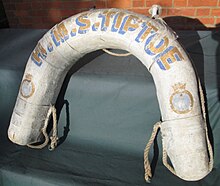
HMS Trump was a British submarine of the third group of the T class. She was built by Vickers-Armstrongs, Barrow, and launched on 25 March 1944. So far she has been the only ship of the Royal Navy (RN) to bear the name Trump. She spent the majority of her life attached to the 4th Submarine Squadron based in Australia. She was kept in service following the war and was refitted for greater underwater performance, and was the final RN submarine to be posted in Australia, departing in January 1969. She was sold off and broken up for scrap in August 1971.

HMS A3 was an A-class submarine built for the Royal Navy in the first decade of the 20th century. She sank in 1912. The wreck is a Protected Wreck managed by Historic England.

ORP Sokół was a U-class submarine built by Vickers-Armstrong at Barrow-in-Furness. Shortly after launching in September 1940 she was to be commissioned by the Royal Navy as HMS Urchin, but instead was leased to the Polish Navy due to a lack of experienced submarine crews. A sister boat to Dzik, both boats operated in the Mediterranean from Malta, where they became known as the "Terrible Twins".

HMS Safari was a third batch S-class submarine built for the Royal Navy during World War II. Commissioned in 1942, she was assigned to operate in the Mediterranean Sea. During the course of the war, Safari sank twenty-five ships, most of which were Italian.
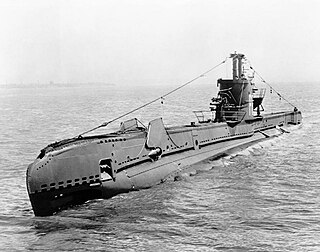
HMS Stonehenge was an S-class submarine of the third batch built for the Royal Navy during World War II. Completed in 1943, she made her initial patrol off Norway and was then transferred to the Far East, where she conducted two war patrols, during which she sank two Japanese ships. On her second patrol, Stonehenge disappeared with all hands and was declared overdue on 20 March 1944. The most probable cause of her sinking is that she hit a mine, but her wreck has never been found.
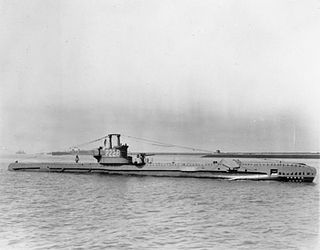
HMS Splendid was a third-batch S-class submarine built for the Royal Navy during World War II. She was laid down on 7 March 1941 and launched on 19 January 1942. After an initial patrol through the Bay of Biscay to Gibraltar, Splendid conducted two patrols in the Mediterranean Sea; one was abandoned after technical problems and on the other she sank two Italian ships. On her next patrol, the submarine attacked two Italian convoys, sinking an Italian destroyer in the second attack. Based in Algiers, the boat operated north of Sicily, sinking six Italian ships, including two tankers and two heavy merchant ships. Splendid was detected by a German destroyer on 21 April 1943 while patrolling off Naples, Italy; the submarine was attacked with depth charges by the destroyer and forced to surface, after which she was scuttled and her surviving crew members taken prisoner. She was the most successful British submarine by tonnage sunk between November 1942 and May 1943.

HMS Sickle was a third-batch S-class submarine built for the Royal Navy during World War II. Completed in 1942, she made her initial war patrol off the Norwegian coast. Sickle then sailed to Gibraltar, from where she conducted one patrol, then to Algiers, French North Africa. From 10 May to 10 October, the boat patrolled the Gulf of Genoa five times and sank a German submarine as well as three minesweepers and an escort ship. She then moved to Beirut, French Lebanon, and conducted two patrols in the Aegean Sea, sinking three caïques and a merchant ship, in addition to landing resistance operatives in Greece.

HMS Stratagem was a third-batch S-class submarine built for the Royal Navy during World War II. Completed in 1943, she made her first war patrol off Norway before she was sent to the Far East, where she conducted three war patrols. On her second, she shelled installations on a Japanese-held island. Her only success came on her last patrol, when she torpedoed and sank a Japanese oil tanker. Soon after, she was spotted by aircraft and depth charged by a destroyer. She was forced to surface, and was scuttled to prevent her capture. Ten crew members escaped the sinking submarine and were taken prisoner, of whom only three survived the war.

HMS Syrtis was a third-batch S-class submarine built for the Royal Navy during the Second World War. Completed in 1943, Syrtis spent most of her career in the Arctic, off Norway, other than a single patrol in the Bay of Biscay,

HMS Sea Rover was a third-batch S-class submarine built for the Royal Navy during World War II. Completed in July 1943, she conducted one war patrol off Norway, before being re-assigned to the Pacific theater. Arriving in February 1944, the boat conducted several patrols in the Strait of Malacca, sinking one transport, one gunboat, one merchant, three sailing vessels, two coasters, and one lighter. During this time, she was attacked several times by aircraft and surface ships; in one attack, she took on two tons of water from leaks caused by depth charges. Sea Rover collided with an Australian corvette in December 1944, and she was sent back to England, then the United States, for repairs. After the war ended, the boat was sent back to England, placed in reserve, then sold for scrap in October 1949.

HMS Sea Nymph was a S-class submarine of the third batch built for the Royal Navy during World War II. Completed in July 1942, she spent the majority of her career patrolling the waters off Norway in the North Sea, then was sent to the Pacific but was forced back due to technical problems.

HMS Seadog was a third-batch S-class submarine built for the Royal Navy during World War II. Completed in September 1942, she spent most of her career in Arctic waters, off Norway, but sank only one German ship in 13 patrols. In January 1945, she was redeployed to the Far East, meeting more success. On her first patrol in the area, the submarine rescued four American airmen. After two patrols, she and her sister ship HMS Shalimar sank five sailing vessels, two coasters, a barge, a tugboat and a Japanese tank landing ship. After the war ended, Seadog was sent back to England, placed in reserve, then sold for scrap in December 1947. She was ultimately broken up in August 1948.

HMS Shalimar (P242) was a third-batch S-class submarine built for the Royal Navy during World War II. Completed in April 1944, she conducted one war patrol off the Orkney Islands, then was assigned to the Pacific theater, arriving there in September. The submarine conducted one war patrol off the Nicobar Islands, destroying several small ships with gunfire. During her next three patrols in the Strait of Malacca, Shalimar sank twelve sailing vessels, eleven landing craft, four coasters, three lighters, three tugboats, and one minesweeper. After the war ended, the boat was sent back to England, placed in reserve, then sold for scrap in July 1950.

HMS Sportsman was a third-batch S-class submarine built for the Royal Navy during World War II. Completed in 1942, she spent most of the war serving in the Mediterranean Sea. After an initial patrol off Norway, she sank the heavy transport Général Bonaparte in the Mediterranean in 1943 and missed a French oil tanker. She was heavily damaged after a mistaken attack by an Allied bomber, and was sent east after repairs to participate in operations in the Black Sea. After the operation was cancelled, Sportsman patrolled the Aegean Sea, sending several Greek and German ships to the bottom. She sank the German transport SS Petrella in early 1944 despite it being clearly marked as a prisoner-of-war ship, killing 2,670 out of 3,173 Italians aboard. Sportsman sank several more ships, and suffered minor damage when she was detected and sighted while attempting to attack a convoy.
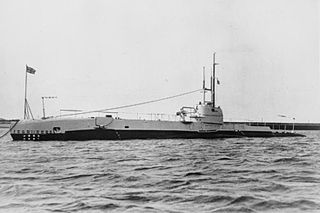
HMS Snapper was a second-batch S-class submarine built during the 1930s for the Royal Navy. Completed in 1935, the boat participated in the Second World War. Snapper is one of the 12 boats named in the song "Twelve Little S-Boats".

HMS Unrivalled (P45) was a U-class submarine built for the Royal Navy during World War II. The boat has been the only ship of the Royal Navy to ever bear the name Unrivalled. Completed in 1942, the boat spent most of the war in the Mediterranean. She sank a number of small merchant ships and naval auxiliaries, but major success eluded her during the war. Too small and slow for the post-war environment, Unrivalled was scrapped in 1946.

HMS P222 was a third-batch S-class submarine built for the Royal Navy during World War II. Commissioned in 1942, the boat had an uneventful first war patrol in the Alboran Sea. She intercepted the Vichy French merchant ship SS Mitidja in July, then provided protection for an Allied convoy to Malta in Operation Pedestal the next month. The navy intended that she was to be sighted on the surface by enemy aircraft to discourage potential attacks by surface warships. Though P222 did not encounter enemy forces, the convoy arrived at its destination on 15 August after sustaining severe losses. She then reconnoitred along the coast of Algeria in advance of Operation Torch, and was attacked by a French patrol ship, but sustained no damage.

HMS H28 was a British H-class submarine built by Vickers Limited, Barrow-in-Furness, as part of the Batch 3 H-class submarines. She was laid down on 18 March 1917 and was commissioned on 29 June 1918. H28 was the only British submarine to see active service in both World Wars, and was finally scrapped in 1944.

HMS B10 was one of eleven B-class submarines built for the Royal Navy in the first decade of the 20th century. Completed in 1906, she was initially assigned to the Home Fleet, before the boat was transferred to the Mediterranean six years later. After the First World War began in 1914, B10 played a minor role in the Dardanelles Campaign. The boat was transferred to the Adriatic Sea in 1916 to support Italian forces against the Austro-Hungarian Navy. She was anchored in Venice when it was bombed by Austro-Hungarian aircraft on 9 August; B10 was sunk by one of their bombs and became the first submarine to be sunk by an aircraft in history. Salvaged by the Italians, she caught fire while under repair and became a constructive total loss. Her hulk was subsequently sold for scrap.
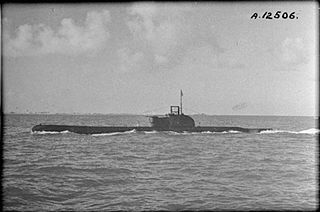
HMS Proteus was a Parthian-class submarine designed and built by Vickers Shipbuilding and Engineering in Barrow-in-Furness for the Royal Navy. She was laid down on 18 July 1928, launched on 22 August 1929 and completed on 17 June 1930. Like other submarines in her class she served on the China Station before the war. In the Second World War, mainly based at Alexandria in the Mediterranean, Proteus sank 15 enemy vessels and damaged several others during her service.


